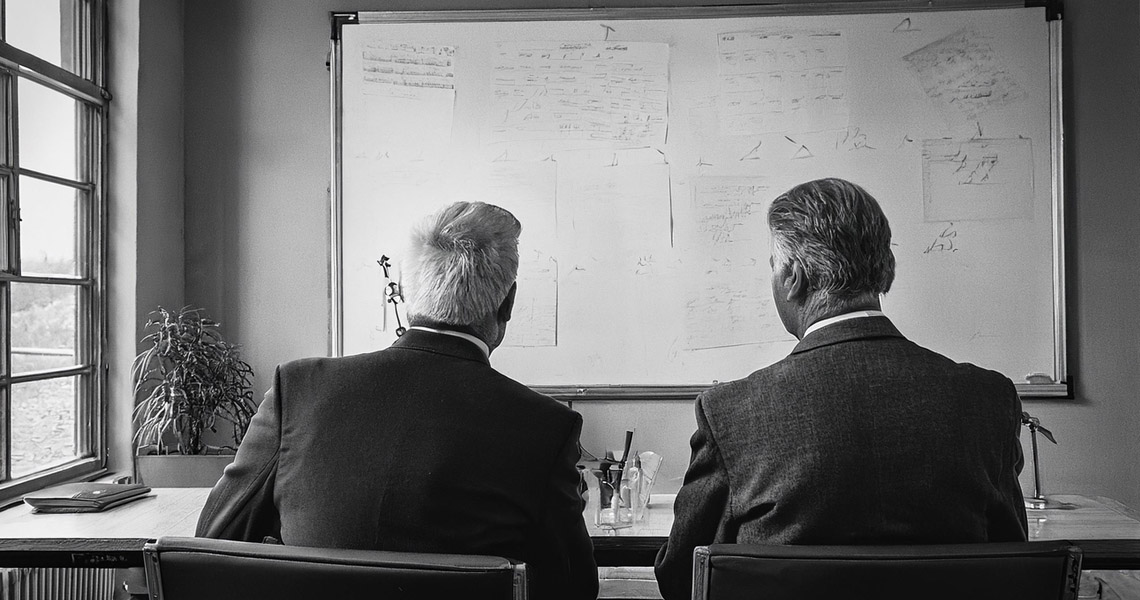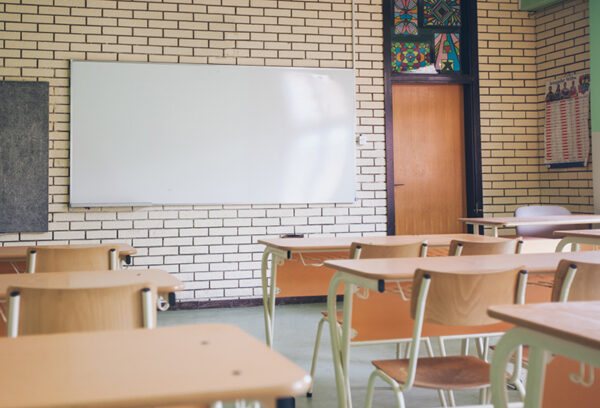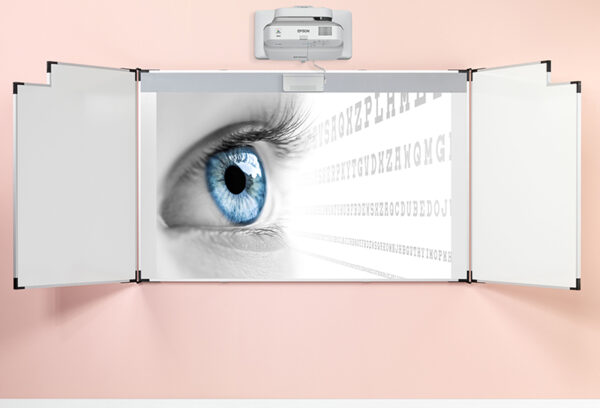The whiteboard, now a staple in classrooms and offices, has an interesting history that begins in the 1950s. But did you know that it didn’t initially enjoy the overwhelming popularity it has today? The story of the whiteboard is one of perseverance, innovation, and unexpected turns. How did this simple invention grow into an indispensable tool in almost every work and learning environment? Discover the fascinating evolution of the whiteboard and the influence of design on its current appearance.
Array
(
[1049] => WP_Post Object
(
[ID] => 1049
[post_author] => 1
[post_date] => 2026-01-09 14:50:21
[post_date_gmt] => 2019-08-05 13:54:24
[post_content] =>
[post_title] => Products
[post_excerpt] =>
[post_status] => publish
[comment_status] => closed
[ping_status] => closed
[post_password] =>
[post_name] => whiteboards-5
[to_ping] =>
[pinged] =>
[post_modified] => 2026-01-09 14:50:21
[post_modified_gmt] => 2026-01-09 14:50:21
[post_content_filtered] =>
[post_parent] => 0
[guid] => https://chameleonwriting.falkor.alcor.cloud/?p=1049
[menu_order] => 1
[post_type] => nav_menu_item
[post_mime_type] =>
[comment_count] => 0
[filter] => raw
[db_id] => 1049
[menu_item_parent] => 0
[object_id] => 1049
[object] => custom
[type] => custom
[type_label] => Custom Link
[title] => Products
[url] => #
[target] =>
[attr_title] =>
[description] =>
[classes] => Array
(
[0] =>
)
[xfn] =>
)
[12842] => WP_Post Object
(
[ID] => 12842
[post_author] => 82
[post_date] => 2026-01-09 14:50:22
[post_date_gmt] => 2023-08-31 08:07:16
[post_content] =>
[post_title] =>
[post_excerpt] =>
[post_status] => publish
[comment_status] => closed
[ping_status] => closed
[post_password] =>
[post_name] => 12842
[to_ping] =>
[pinged] =>
[post_modified] => 2026-01-09 14:50:22
[post_modified_gmt] => 2026-01-09 14:50:22
[post_content_filtered] =>
[post_parent] => 0
[guid] => https://chameleonwriting.falkor.alcor.cloud/?p=12842
[menu_order] => 65
[post_type] => nav_menu_item
[post_mime_type] =>
[comment_count] => 0
[filter] => raw
[db_id] => 12842
[menu_item_parent] => 0
[object_id] => 12839
[object] => page
[type] => post_type
[type_label] => Page
[url] => https://chameleonwriting.com/en/references-3/
[title] => References
[target] =>
[attr_title] =>
[description] =>
[classes] => Array
(
[0] =>
)
[xfn] =>
)
[11862] => WP_Post Object
(
[ID] => 11862
[post_author] => 82
[post_date] => 2026-01-09 14:50:22
[post_date_gmt] => 2023-08-21 13:36:51
[post_content] =>
[post_title] => pCon
[post_excerpt] =>
[post_status] => publish
[comment_status] => closed
[ping_status] => closed
[post_password] =>
[post_name] => pcon-data
[to_ping] =>
[pinged] =>
[post_modified] => 2026-01-09 14:50:22
[post_modified_gmt] => 2026-01-09 14:50:22
[post_content_filtered] =>
[post_parent] => 4705
[guid] => https://chameleonwriting.falkor.alcor.cloud/?p=11862
[menu_order] => 66
[post_type] => nav_menu_item
[post_mime_type] =>
[comment_count] => 0
[filter] => raw
[db_id] => 11862
[menu_item_parent] => 0
[object_id] => 4701
[object] => page
[type] => post_type
[type_label] => Page
[url] => https://chameleonwriting.com/en/information/interior-designers-and-architects/chameleon-now-available-in-pcon/
[title] => pCon
[target] =>
[attr_title] =>
[description] =>
[classes] => Array
(
[0] =>
)
[xfn] =>
)
[32752] => WP_Post Object
(
[ID] => 32752
[post_author] => 85
[post_date] => 2026-01-09 14:50:22
[post_date_gmt] => 2025-08-07 10:59:20
[post_content] =>
[post_title] => Order Samples
[post_excerpt] =>
[post_status] => publish
[comment_status] => closed
[ping_status] => closed
[post_password] =>
[post_name] => order-samples-2
[to_ping] =>
[pinged] =>
[post_modified] => 2026-01-09 14:50:22
[post_modified_gmt] => 2026-01-09 14:50:22
[post_content_filtered] =>
[post_parent] => 0
[guid] => https://chameleonwriting.com/?p=32752
[menu_order] => 67
[post_type] => nav_menu_item
[post_mime_type] =>
[comment_count] => 0
[filter] => raw
[db_id] => 32752
[menu_item_parent] => 0
[object_id] => 32718
[object] => page
[type] => post_type
[type_label] => Page
[url] => https://chameleonwriting.com/en/chameleon-samples/
[title] => Order Samples
[target] =>
[attr_title] =>
[description] =>
[classes] => Array
(
[0] =>
)
[xfn] =>
)
[26482] => WP_Post Object
(
[ID] => 26482
[post_author] => 85
[post_date] => 2026-01-09 14:50:22
[post_date_gmt] => 2025-01-17 11:08:57
[post_content] =>
[post_title] => Information
[post_excerpt] =>
[post_status] => publish
[comment_status] => closed
[ping_status] => closed
[post_password] =>
[post_name] => information-2
[to_ping] =>
[pinged] =>
[post_modified] => 2026-01-09 14:50:22
[post_modified_gmt] => 2026-01-09 14:50:22
[post_content_filtered] =>
[post_parent] => 0
[guid] => https://chameleonwriting.com/?p=26482
[menu_order] => 68
[post_type] => nav_menu_item
[post_mime_type] =>
[comment_count] => 0
[filter] => raw
[db_id] => 26482
[menu_item_parent] => 0
[object_id] => 26482
[object] => custom
[type] => custom
[type_label] => Custom Link
[title] => Information
[url] => #
[target] =>
[attr_title] =>
[description] =>
[classes] => Array
(
[0] =>
)
[xfn] =>
)
[36031] => WP_Post Object
(
[ID] => 36031
[post_author] => 85
[post_date] => 2026-01-09 14:50:22
[post_date_gmt] => 2025-11-12 11:54:33
[post_content] =>
[post_title] => ProTips
[post_excerpt] =>
[post_status] => publish
[comment_status] => closed
[ping_status] => closed
[post_password] =>
[post_name] => protips-2
[to_ping] =>
[pinged] =>
[post_modified] => 2026-01-09 14:50:22
[post_modified_gmt] => 2026-01-09 14:50:22
[post_content_filtered] =>
[post_parent] => 0
[guid] => https://chameleonwriting.com/?p=36031
[menu_order] => 75
[post_type] => nav_menu_item
[post_mime_type] =>
[comment_count] => 0
[filter] => raw
[db_id] => 36031
[menu_item_parent] => 0
[object_id] => -325
[object] => kennisbank
[type] => post_type_archive
[title] => ProTips
[type_label] => Post Type Archive
[url] => https://chameleonwriting.com/en/protips/
[target] =>
[attr_title] =>
[description] =>
[classes] => Array
(
[0] =>
)
[xfn] =>
)
[19332] => WP_Post Object
(
[ID] => 19332
[post_author] => 3
[post_date] => 2026-01-09 14:50:22
[post_date_gmt] => 2024-05-14 11:58:44
[post_content] =>
[post_title] => Contact
[post_excerpt] =>
[post_status] => publish
[comment_status] => closed
[ping_status] => closed
[post_password] =>
[post_name] => contact-4
[to_ping] =>
[pinged] =>
[post_modified] => 2026-01-09 14:50:22
[post_modified_gmt] => 2026-01-09 14:50:22
[post_content_filtered] =>
[post_parent] => 0
[guid] => https://chameleonwriting.com/?p=19332
[menu_order] => 76
[post_type] => nav_menu_item
[post_mime_type] =>
[comment_count] => 0
[filter] => raw
[db_id] => 19332
[menu_item_parent] => 0
[object_id] => 19332
[object] => custom
[type] => custom
[type_label] => Custom Link
[title] => Contact
[url] => https://chameleonwriting.com/en/contact/
[target] =>
[attr_title] =>
[description] =>
[classes] => Array
(
[0] =>
)
[xfn] =>
)
[12326] => WP_Post Object
(
[ID] => 12326
[post_author] => 82
[post_date] => 2026-01-09 14:50:22
[post_date_gmt] => 2023-08-25 07:08:58
[post_content] =>
[post_title] => Languages
[post_excerpt] =>
[post_status] => publish
[comment_status] => closed
[ping_status] => closed
[post_password] =>
[post_name] => taalschakelaar-6
[to_ping] =>
[pinged] =>
[post_modified] => 2026-01-09 14:50:22
[post_modified_gmt] => 2026-01-09 14:50:22
[post_content_filtered] =>
[post_parent] => 0
[guid] => https://chameleonwriting.falkor.alcor.cloud/?p=12326
[menu_order] => 77
[post_type] => nav_menu_item
[post_mime_type] =>
[comment_count] => 0
[filter] => raw
[db_id] => 12326
[menu_item_parent] => 0
[object_id] => 12326
[object] => custom
[type] => custom
[type_label] => Language switcher
[title] => EN
[url] => #pll_switcher
[target] =>
[attr_title] =>
[description] =>
[classes] => Array
(
[0] => pll-parent-menu-item
)
[xfn] =>
)
)
1
The History of the Whiteboard
How it began
Before the whiteboard, chalkboards dominated, but they had drawbacks such as dust and mess. The idea for the whiteboard is credited to Martin Heit, a photographer, who came up with the idea in the 1950s when he used film material to take notes.
Heit tried to sell his invention but encountered little interest. It wasn’t until Albert Stallion, who worked at a steel company in the 1960s, saw the potential of enameled steel as a writing surface that the whiteboard began gaining popularity. Stallion eventually founded a company specializing in the production of whiteboards, paving the way for their widespread adoption.
The whiteboard revolution
In the 1970s, the use of whiteboards became revolutionary with the development of dry-erase markers by Jerry Woolf of Techform Laboratories in the United Kingdom. This made whiteboards more practical and user-friendly. Over the following decades, whiteboards gradually replaced chalkboards in educational institutions and businesses due to their cleaner and more modern appearance.
Start of Smit Visual
In 1978, Smit Visual was founded as a producer of Visual Supplies. Smit Visual’s positioning as a Dutch producer of quality boards quickly gained traction. The SL8 whiteboard became one of the iconic whiteboards in offices and schools around the world. To this day, it remains the best-selling whiteboard in the collection.
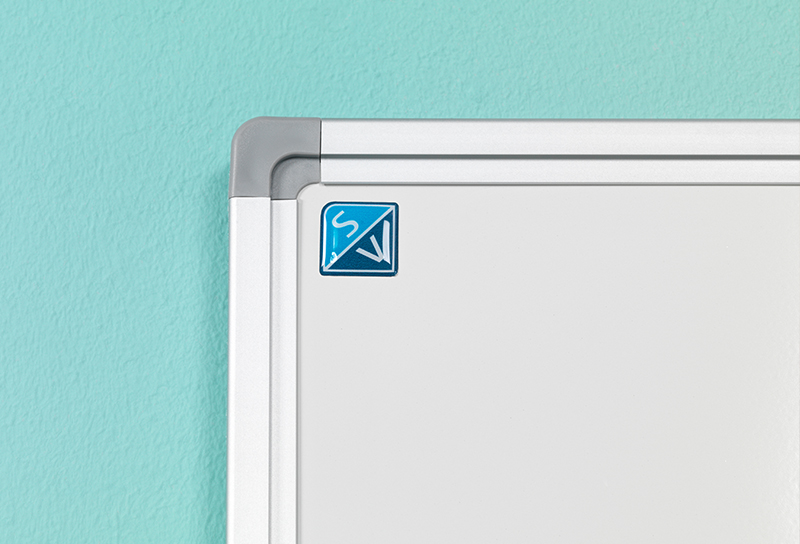
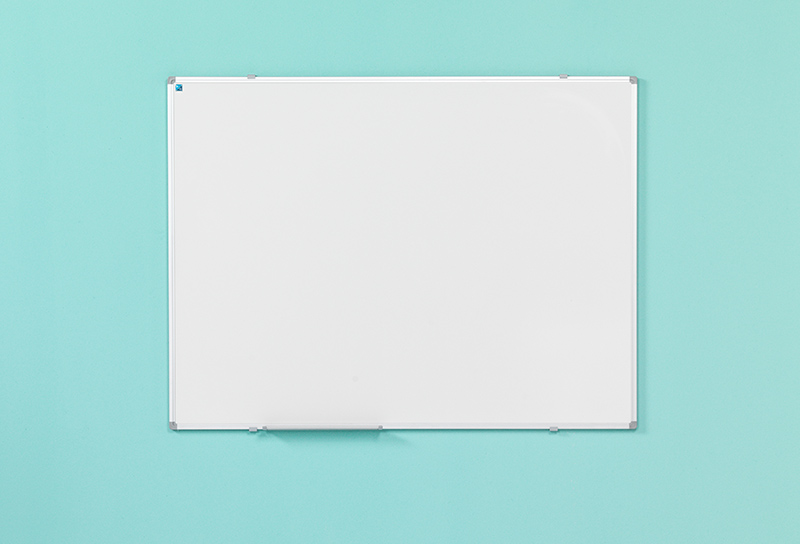
The Rise of Projection
The 1990s saw an explosion in the popularity of whiteboards, coinciding with the rise of technology in classrooms and offices. Today, whiteboards are an indispensable tool for communication, brainstorming sessions, and presentations.
The start of Chameleon
In the past decade, the whiteboard has undergone a remarkable transformation, especially with the rise of high-quality design interior decoration. Where it was originally purely functional, the whiteboard is now also an aesthetic element in modern work and learning environments. Chameleon whiteboards perfectly respond to this trend by offering products that are not only practical but also seamlessly integrate into stylishly designed spaces. These whiteboards come in various shapes, materials, and finishes, contributing to a harmonious and inspiring interior.
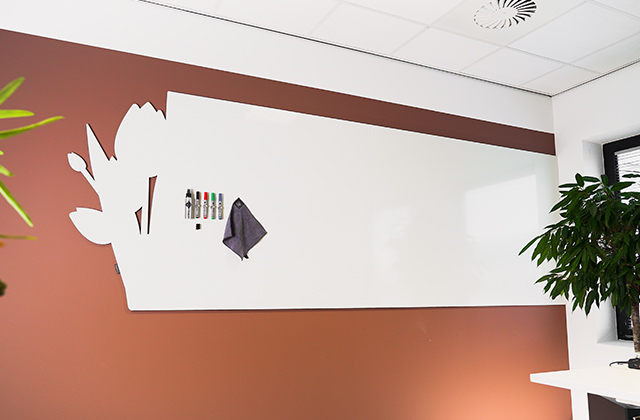
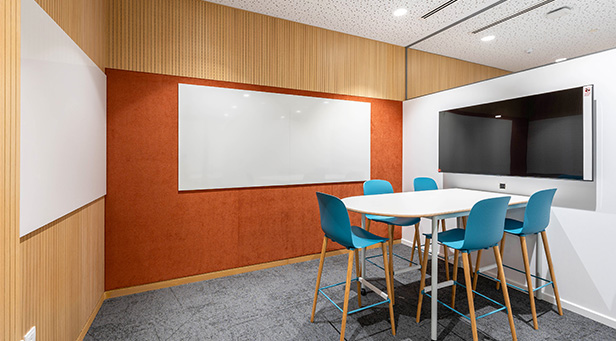
The journey of the whiteboard from a niche invention to an everyday tool highlights its adaptability and lasting value in both educational and professional environments. Check out all the whiteboards from Chameleon.


